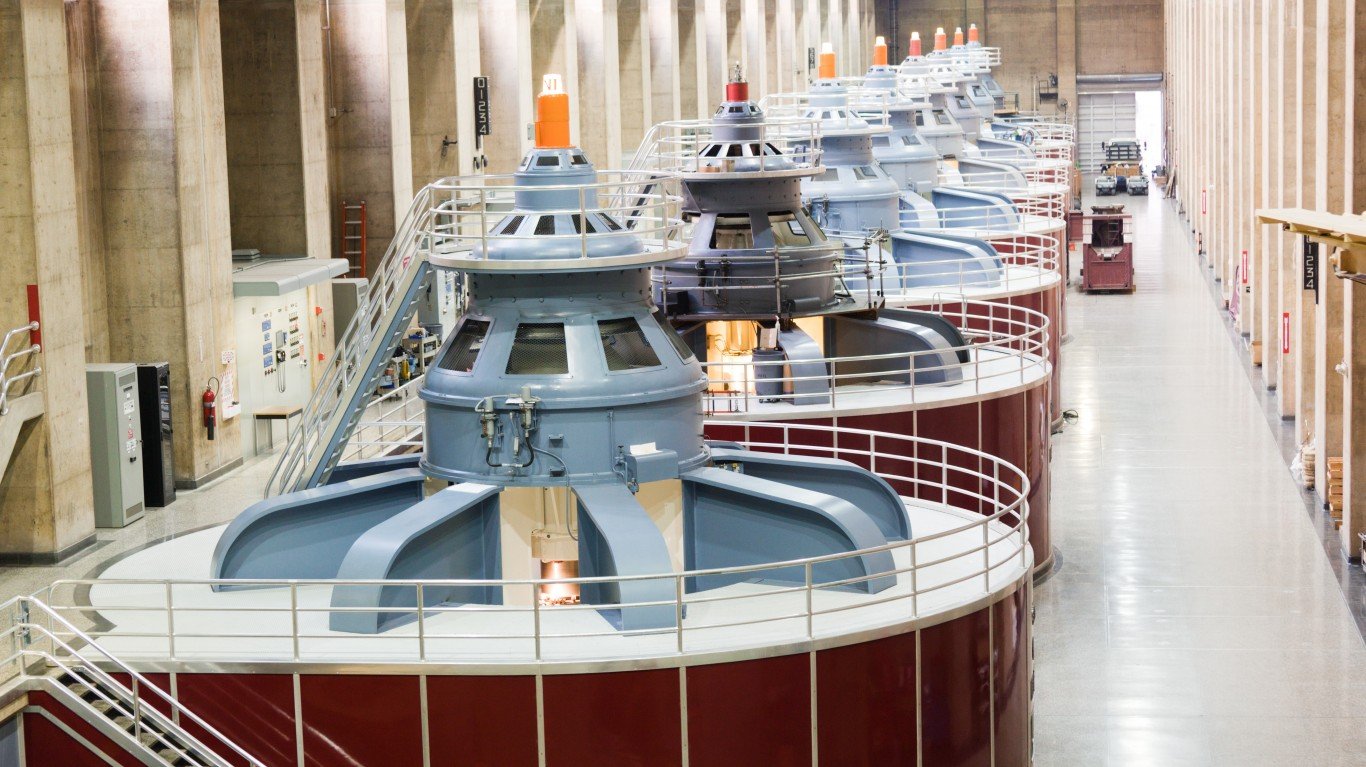

The movement into environment, social and governance (ESG) is attracting billions and billions of investment dollars away from certain companies and sectors. Many utilities in America are moving further away from coal and fossil fuels to alternative energy and renewable energy. These efforts are going to require additional billions of capital spending to fund and some of the utilities are farther along than others.
Duke Energy Corporation (NYSE: DUK) hosted its inaugural environmental, social and governance (ESG) day in a virtual format to showcase its long-term power generation mix plans. The nation’s second largest utility by market cap is pursuing an extensive expansion of clean energy and cutting emissions.
The move will ultimately lower its carbon emissions, lower its methane release, come with coal plant retirements and will come with much more renewable energy sources. Some investors will look favorably at the ESG efforts, but some will have more questions.
Duke’s announcement is effectively a 10-year capital investment plan to accelerate its decarbonization more than its 5-year plan from earlier this year had been targeting. While some points were issued in bullets, the main target is for Duke to double its enterprise-wide renewable portfolio from 8 gigawatts to 16 gigawatts by 2025.
Longer-term, Duke is seeking to at least triple renewable capacity for the company’s regulated utilities by 2030. And for the long-haul, Duke is targeting to bring its regulated renewable capacity up to 40 gigawatts by the year 2050.
Duke’s current electric generating capacity is a total of 51,000 megawatts through its regulated utilities and 2,300 megawatts through the company’s nonregulated Duke Energy Renewables unit. The current energy renewables unit operations include wind and solar generation facilities and incorporates energy storage and microgrid projects.
The company’s regulated utilities serve 7.8 million retail electric customers in North Carolina, South Carolina, Florida, Indiana, Ohio and Kentucky. Its gas utilities and infrastructure unit distributes natural gas to roughly 1.6 million customers in North Carolina, South Carolina, Tennessee, Ohio and Kentucky.
The goals are ambitious, but Duke did lay out some of those plans. The utility will add over 11,000 megawatts of energy storage over its grids by 2050. The company will also continue to invest in and advocate for emerging technologies. The company’s plans are likely to help its ESG ratings, but it remains to be seen if that ESG rating will improve until after the actions have been taken.
Duke’s capital plan includes accelerating its coal plant closures. The company noted that has retired 50 coal units with over 6,500 megawatts of output since 2010, and it plans to retire all of its coal-only units by 2030 which are located in the Carolinas.
The effort does come with actual expense estimates. Duke Energy now expects its 5-year capital spending plan to increase by about $2 billion, moving up to roughly $58 billion in total. Duke is also now forecasting that its capital plan covering years 2025 to 2029 is expected to be between $65 billion and $75 billion to boost its plans in clean energy and renewable energy.
While the costs are massive, Duke noted that the company is actively mitigating the capital increases by cutting costs elsewhere. Those cuts and savings include implementing digital capabilities, leveraging innovation and finding efficiencies across the business.
Duke did not specify is long-term growth targets in raw dollars, but the transition to clean energy is expected to allow the power giant to increase its earnings at the upper-end of its current 4% to 6% long-term adjusted earnings per share through 2024.
As a further commitment to ESG, Duke has announced a net-zero methane target in its natural gas business by 2030. Friday’s announcement further noted that Duke has eliminated all cast iron and bare steel pipes in its natural gas delivery system in an effort to end methane leakage. The natural gas segment has already seen decreased customer rates, and Duke expects to expand its renewable natural gas investments over the next decade.
While Duke’s current operations still involve coal and still have methane exposure, Duke was already upgraded to an ‘A’ ESG score (from a multi-year ‘BBB’ rating) by MSCI in August of 2020. MSCI noted at that time that Duke was still a laggard with its toxic emissions and waste, but was an ESG leader in human capital development and in opportunities in renewable energy. Duke was given an average score on its corporate governance, carbon emissions and water stress.
For a comparison of Duke versus peers, MSCI’s ESG rating for NextEra Energy, Inc. (NYSE: NEE) is ‘AAA.’ MSCI further noted that NextEra is not a laggard on any of the key issues evaluated for its industry.
As for how this will impact Duke’s dividend, the higher spending is not so far above the previous path that Duke would have to skip dividend hikes. Its last dividend hike was announced over the summer, and the higher payout of $0.965 was a jump of 2.1% over the $0.945 prior payout. Duke’s current $93.15 share price generates a 4.14% dividend yield.
Duke is currently valued just above the Refinitiv consensus analyst price target of $92.36, but that is because its stock surged from $82.41 at the end of September on reports that NextEra Energy had approached it about a merger. As a reminder, NextEra is now the nation’s largest energy stock of them all. Duke’s market cap is now $68.5 billion, less than half of the $148 billion market cap of NextEra.
Take This Retirement Quiz To Get Matched With An Advisor Now (Sponsored)
Are you ready for retirement? Planning for retirement can be overwhelming, that’s why it could be a good idea to speak to a fiduciary financial advisor about your goals today.
Start by taking this retirement quiz right here from SmartAsset that will match you with up to 3 financial advisors that serve your area and beyond in 5 minutes. Smart Asset is now matching over 50,000 people a month.
Click here now to get started.
Thank you for reading! Have some feedback for us?
Contact the 24/7 Wall St. editorial team.


